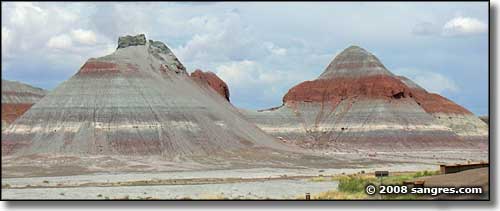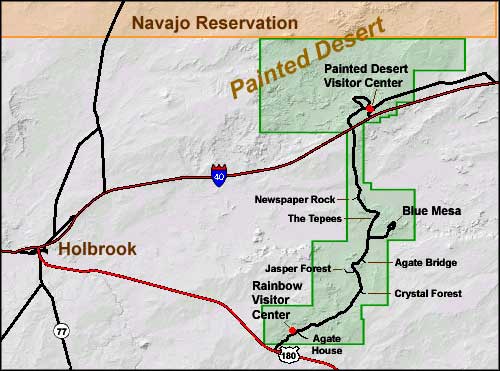
Petrified Forest National Park
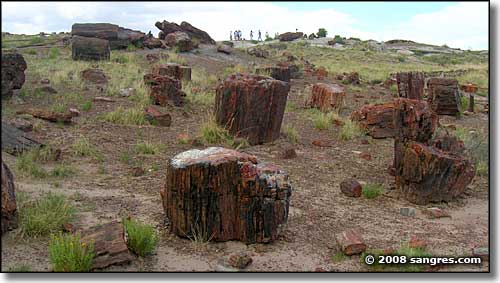
Along the Giant Logs Trail
Petrified Forest National Park lives up to its name with 225 million year old fossils of dinosaurs and petrified trees scattered around the property among the multi-colored badlands of the Painted Desert. However, this is one National Park that rolls up the "sidewalks" at night: the hours change with the seasons but figure the place is only open during daylight hours (but never before 7:00 AM). There is no overnight parking allowed and the only camping available is in the 52,000+ acre Wilderness Area (north of Lithodendron Wash, about 1 mile from the access trailhead, and get a free permit at least one hour before the park closes for the day...)
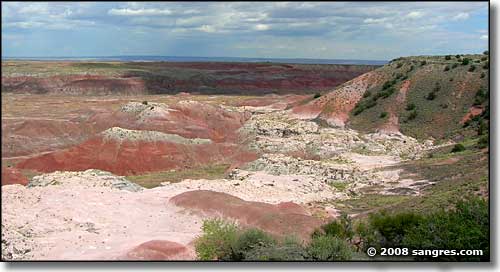
The Painted Desert, north end of Petrified Forest National Park
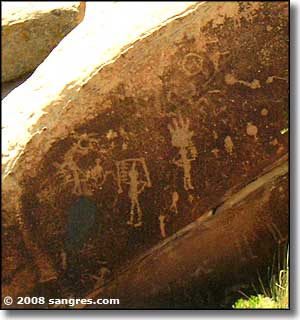
Most of the petrified wood and fossils in Petrified Forest National Park date from the Late Triassic period, more than 200 million years ago. The Chinle Formation here is some 1,800 feet thick and there are fossils encased throughout the formation. There is speculation that the large number of petrified logs here came about because of a log jam on an ancient river that flowed across this countryside so many eons ago. The logs were buried in the sands of the river while the petrification process took place (which probably takes less than 100 years in a suitable mineralized watery environment). Apparently, this wood was not buried deep enough, or quickly enough, for the temperature and pressure to build high enough to make coal out of the woody deposit before it was completely petrified. Once petrified, it is essentially silica stone, and has the same properties and lifetime as any other very hard rock (petrified wood rates between 7 and 8 on the Moh's Hardness Scale, with only topaz, corundum and diamonds being harder).
The Petrified Forest starts to show near the edge of the Painted Desert. This is the southwestern region of the Colorado Plateau, a large area of the Southwest that was last uplifted some 70-65 million years ago during the Laramide Orogeny, the same mountain-building process that created the Ancestral Rockies. What we see today is what is left after all those millions of years of wind and water erosion. The red and blue tones are from broken down materials of the Chinle Formation. The mudstones and clays are mostly bentonite, an altered volcanic clay/ash that can absorb up to 7 times its weight in water (and the expansion/contraction of bentonite stops the growth of erosion-preventing vegetation). The flat-topped mesas and buttes in the area all have caps of more erosion-resistant sandstone on top of the softer clays and mudstones.
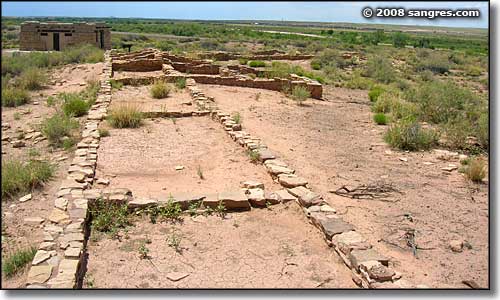
Pueblo ruins near the Rio Puerco
With all the attention on petrified logs and ancient colored sands, rocks and volcanic ash, most folks miss the small pueblo ruin just south of the Puerco River. To me, it looks like it was originally built by the Sinagua people, a tribe that was spread from the Montezuma Castle area to the San Francisco Volcanic Field. They were craftsmen, traders and cultivators with reasonably complex societal and religious structures. Puerco Pueblo was first occupied from about 1100 to about 1200 AD. Then is was occupied again from about 1300 to about 1400 AD before it was finally abandoned. Their descendants can be found today among the Hopi, Zuni and Rio Grande Pueblos to the east. The first recorded report from Spanish explorers dates from 1540, and there was no one living at the pueblo then.
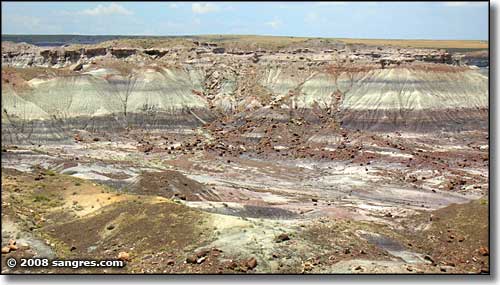
In the Jasper Forest area
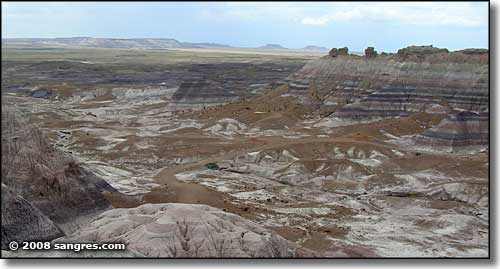
Looking west from Blue Mesa

View from the Blue Mesa Overlook

The Tepees
